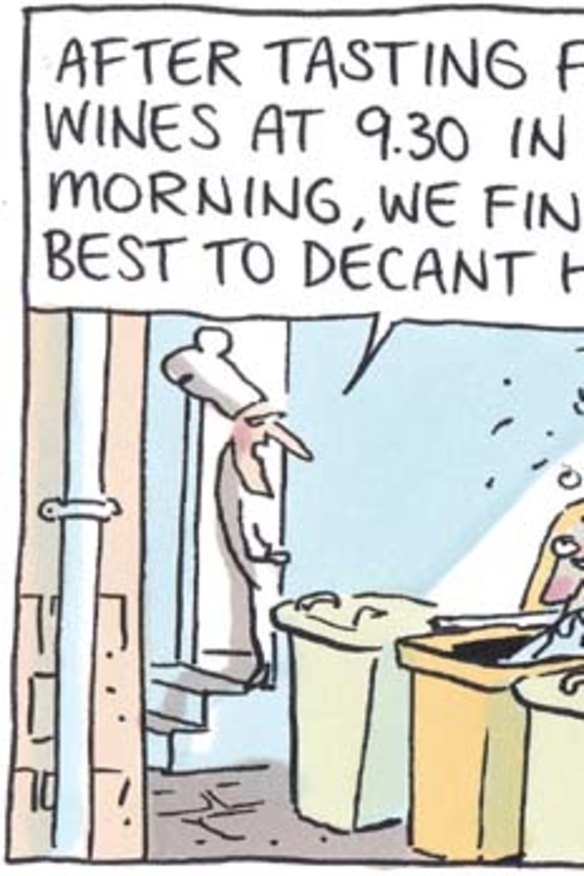A sommelier's art requires a good palate

Sommeliers are an interesting bunch. We generally only find them in our better restaurants, where they occupy a specialist role among the front-of-house team. Most people's exposure to them consists of a brief conversation at a restaurant table when they are selecting a wine or wines to go with their food, but there is a lot more to the sommelier's job than pulling corks and waxing lyrical with adjective-rich descriptions of the wine.
In essence, the sommelier is there to ensure maximum beverage sales while delivering guest satisfaction; they could also be titled ''beverage sales manager'' and the description would be appropriate.
The sommelier is responsible for the construction of the wine list in a restaurant, which in itself is a complex process. Rather than a simple group of wines that take the sommelier's fancy, the wine list must fulfil a number of important criteria: it must balance with a complex food offering, it must balance with the spending range of the restaurant guests, it must deliver an appropriate profit margin, and it must not require holding excessive amounts of slow-moving stock.
It's quite a trick to get the wine list right, and this requires constant research. Wine companies and distributors want to feature their wines on the wine lists of ''hatted'' restaurants because it boosts their reputation and profile of the wine. As many as 70 sample bottles a week can be presented and each one must be assessed at a tasting.
Now, I love my wine, and have been known to down a couple of bottles in a dedicated session, but I still have empathy for the sommelier and other front-of-house staff having to sample 15 bottles of wine at 9.30 in the morning, several times a week. The smart ones spit, but I have seen several whose obvious love for the product is a portent for an early demise - only the disciplined move gracefully into middle age. Apart from the danger of developing a ceramic liver, constant tasting of wine rots the teeth, and a florid face and bad teeth ain't a good look.
There is also a great deal of physical work. Pick up a box of wine and feel how heavy it is. The sommelier has to receive incoming stock, check it against the order, and then move it into secure storage - either in boxes or into wine racks. A busy fine-dining restaurant could receive up to 30 boxes of wine and other beverages in a week, all of which have to be physically handled until its ultimate sale.
A sommelier also has the responsibility to train other front-of-house staff to handle, serve and sell the wines once the wine list has been determined. Every time a new wine is added to the list, the waiters and bar staff have to be introduced to it and learn what foods to match it with and how to describe it. Most wine lists are constantly evolving, so the training aspect of the job never stops.
The top sommeliers I have worked with are very talented people who have built up an almost encyclopaedic knowledge of the wines and vintages of the old and new worlds. Disciplined and professional, they are commercially pragmatic and are aware that their own palate may have moved away from the mainstream over time and are realistic about selecting wines that meet the needs of their customers. They tend to be quite succinct and accurate in their descriptions.
There are also many less-experienced sommeliers who we dub ''the Wine Fantasy Camp''. These are the enthusiastic young aficionados who possess a higher proportion of enthusiasm than experience. It takes a number of years and quite a deal of focus to develop an accurate wine palate and to learn to be able to confidently identify the various wine varieties and faults.
A lack of experienced staff in the hospitality industry has created an unusual opportunity for some who are possibly not ready to move up in the world of wine service. You can usually identify them from their obvious youth and the bizarre, imaginative descriptions they apply to wines. I've always been underwhelmed by sweaty saddles, wet cardboard, pencil shavings, toasty wood, etc. There are quite a few of these oenological space cadets around; they can be entertaining if you don't take them too seriously.
While we're on the subject, you might want to read an entertaining and thought-provoking article on the subject of wine descriptions: find it here.
Tony Eldred is a consultant to the hospitality industry.